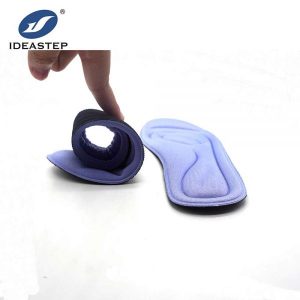
Soft insoles and hard insoles offer different advantages based on the specific needs of an individual. Here are some advantages of each type:
Advantages of soft insoles:
- Cushioning: Soft insoles typically provide more cushioning and shock absorption. Which can help reduce impact forces on the feet during activities like walking or running.
- Comfort: Soft materials such as gel or foam can provide comfortable padding underfoot, making them suitable for individuals seeking extra comfort or those with sensitive feet.
- Pressure relief: Soft insoles can distribute pressure more evenly across the foot. Alleviating discomfort caused by conditions like metatarsalgia (forefoot pain) or heel spurs.
Advantages of hard insoles:
- Stability and support: Hard insoles, often made from rigid materials like carbon fiber or plastic. Offer excellent stability to control excessive foot motions such as overpronation. They provide enhanced arch support and help maintain proper alignment.
- Longevity: Harder materials tend to be more durable compared to softer ones, meaning that hard insoles may have a longer lifespan before needing replacement.
- Specific condition management: Certain foot conditions require firmer support for effective management. Conditions like plantar fasciitis or flat feet may benefit from the added rigidity offered by hard insoles.
It’s important to note that choosing between soft and hard insoles depends on individual preferences, biomechanical needs, and any existing foot conditions present. Some individuals may find a combination of soft and hard elements within their custom-made orthotics to achieve optimal comfort and support.
